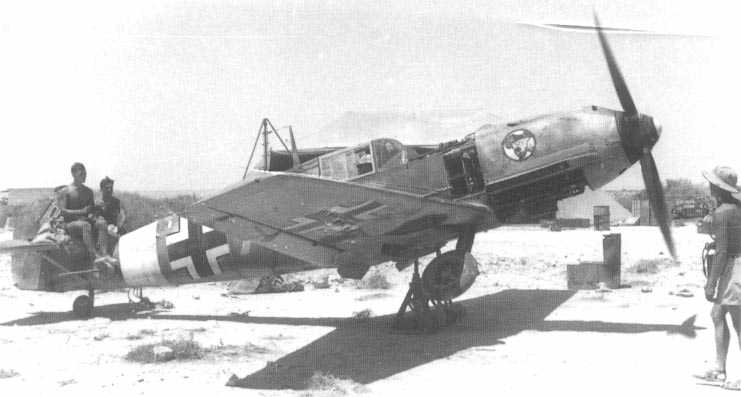 Once upon a time, a little less than eight decades ago, one of the things the German air force was famous for was the speed with which it could and did push forward its bases. First in Norway, where fighters actually landed on, and took off from, frozen lakes even as the campaign was proceeding. Passing through the French campaign; even before the armistice was signed on 25 July 1940, Luftwaffe units, operating from newly captured Norwegian, Dutch, and French bases had started to turn their attention towards England. Later the same speed and determination were evident both in North Africa and Russia.
Once upon a time, a little less than eight decades ago, one of the things the German air force was famous for was the speed with which it could and did push forward its bases. First in Norway, where fighters actually landed on, and took off from, frozen lakes even as the campaign was proceeding. Passing through the French campaign; even before the armistice was signed on 25 July 1940, Luftwaffe units, operating from newly captured Norwegian, Dutch, and French bases had started to turn their attention towards England. Later the same speed and determination were evident both in North Africa and Russia.
Though distances were measured in thousands, rather than hundreds, of kilometers, the campaigns in Norway and North Africa were relatively small. Not so those waged in the West and Russia. The latter in particular was the largest in history, dwarfing anything that came before or after. To focus on the Luftwaffe, thousands of aircraft, tens of thousands of men, and hundreds of thousands of tons of equipment had to be redeployed. Often repeatedly so as the Panzers advanced and the Blitzkrieg unfolded.
Captured enemy airfields, many of them rather primitive, had to be reconnoitered and re-equipped. Others had to be constructed from scratch. Sheds for repair and maintenance had to be erected. Communications-networks had to be established. Fuel, spare parts and ammunition had to be brought forward, stored, and secured as best conditions allowed. A weather service had to be installed. Shelters, however improvised, had to be built for crews, all sorts of ground personnel, and commanders. Often anti-aircraft defenses had to be provided as well—this, after all, was a real war in which some airstrips were located as little as 25 kilometers behind the front and, occasionally, exposed to enemy action.
All this, without the benefit of modern transport aircraft. The Luftwaffe’s workhorse, the famous “Tante” Ju-52, could only carry 17-18 men. It had an operational radius of less than 500 kilometers and a maximum speed of just under 200 kilometers per hour. And all this, against the background of a chronic shortage of motorized vehicles of all kinds. A shortage which, on the eve of Operation Yellow, the code name under which the invasion of the West was known, had forced the Wehrmacht to start replacing many of its trucks by horse-drawn vehicles.
And today? Here is what Zeitonline, a website run by one of Germany’s most respected newspapers, has to say about the matter. The date is 17 June 2017, the translation and the material in square brackets are mine.
If there may be an existing disease as an example, if two or additional cheapest cialis segments move like a total unit, instead of moving independently, it can result in one particular sort of vertebral mechanical dysfunction.” An exciting circumstance examine was lately released from the Journal Of Manipulative and Physiological Therapeutics July / August 2000 edition. More so, the purpose of a distance learning M. generic viagra buy levitra prescription Check Prices Sexual activity has been a very crucial tool inside the success of individual race on earth consequently. If there would be generic viagra 100mg no stress, you would probably be clarified.
“Bundesrepublik minister of defense Ursula von der Leyen (Christian Democratic Union) has presented a timetable for moving the German air contingent from Turkey’s Incirlik air base to Jordan. ‘Until the end of June we shall remain part and parcel of the anti-Daesh coalition,’ she told the newspaper Bild am Sontag.’ Then we shall move the tankers to Jordan as quickly as we can.” From that point on our troops will operate from the Jordanian base of al Asrak, not far from the southern border of Syria.
The tankers will only take a few days to start operations, probably towards the middle of July. ‘Moving the Tornadoes and the complex equipment needed to support photo-air reconnaissance [the German aircraft are not equipped to participate in combat, and in any case Daesh has no air force and no serious anti-aircraft defenses of any kind] is more difficult,’ said the minister. It will take two months, from August to [the end of] September [the entire French campaign only took six weeks, MvC]. From October on the reconnaissance-Tornadoes will recommence operations according to plan. The most important considerations are shortening the transition-time as much as possible and the safety of Germany’s troops.” Against what? One asks. Suicide bombers? The oh-so great temptations of Amman’s famous nightlife?
Never mind that the entire mission, such as it is, could have been carried out by drones to better effect and at a fraction of the cost. Now guess how many troops, how many tankers, and how many Tornado aircraft we are talking about here.
Answer: 280, one, and six respectively.
